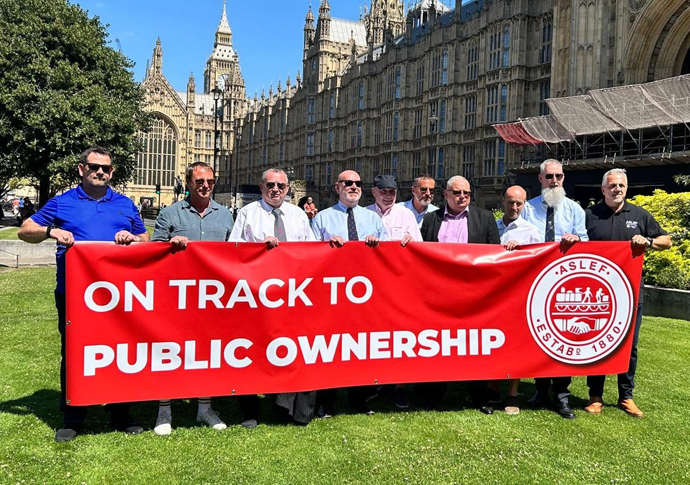Rail union leader shares track death tragedy and trauma train drivers face
‘Basically it was a very macho, male-dominated industry. You get back on a horse you fell off’
Friday, 2nd August 2024 — By Richard Osley

Private rail companies and their profit-seeking shareholders were put on notice this week as the new Labour government began work on its pledge to nationalise the railways. The first piece of legislation arrived – on time – in the House of Commons on Monday. Mick Whelan, the Aslef union leader, joined MPs in favour of the giant overhaul of the network outside parliament. The union said: “We have long campaigned for the re-nationalisation of our railways, this is a welcome first step to bring the train operators into public ownership. We were glad to be joined by MPs today, to mark the next step towards public ownership.”
A TRADE union leader has spoken about the horror of finding a boy dying on the railway tracks during his time as a driver on the North London Line.
Mick Whelan, the general secretary of Aslef, said there was now greater help for workers who faced unimaginable tragedy while doing their job, but said back then: “Basically it was a very macho, male-dominated industry. You get back on a horse you fell off.”
He added: “I had two young kids at the time. You go home and hug your kids that bit tighter.”
The union leader said it had happened between Camden Road and Caledonian Road in 1991, and that the boy – around seven years old – had been playing on the tracks before he stepped on the 750-volt live rail.
He told a public information film that the child, who died in an ambulance from a heart attack, looked like he was sleeping.
That was the only time he had talked about the incident until an interview with the Telegraph over the weekend.
“Quite simply, I was driving the train on a Sunday on the North London Line and I hit something. There was a smashed scaffold board,” he said. “So kids have been on and about the track, seeing what a train would do if you put a scaffold board across the track.”
He had not hit the child but was left with on “emotional rollercoaster” from then on.
“Some people had a fatality of whatever nature and never drove a train again, never came back,” he said.
“Others had two or three in their career and seemed to be able to get on with it. About a year later the guard and I had to go to the inquest at St Pancras. And on the day they put us in a little waiting room with the family. It was that crass.”
Mr Whelan added: “I’m sitting there in full railway uniform, right. I’m the driver, the guard’s there in uniform with the people who want the answers to what happened to their child.”
After becoming head of Aslef in 2011, he worked on a change of policy so that distraught drivers did not have to testify in person at the majority of inquests into deaths on the rail.
“Reliving the event 18 months afterwards isn’t a good thing for the drivers to come to terms with,” he said.
Accidental deaths on the tracks are reduced every year, although there were still 20 fatalities of this kind last year.
Rob Wainwright, head of level crossings and public safety for Network Rail, said: “As the holiday season approaches, we are once again asking parents to ensure that they and their children know all about rail safety so they can behave responsibly when they are in a rail setting. Help us to get everyone to where they want to be safely and on time this summertime.”